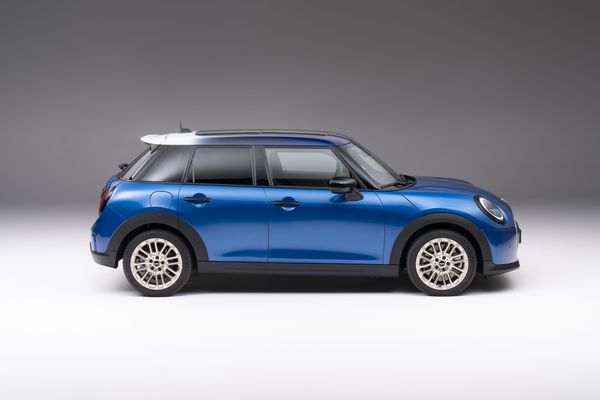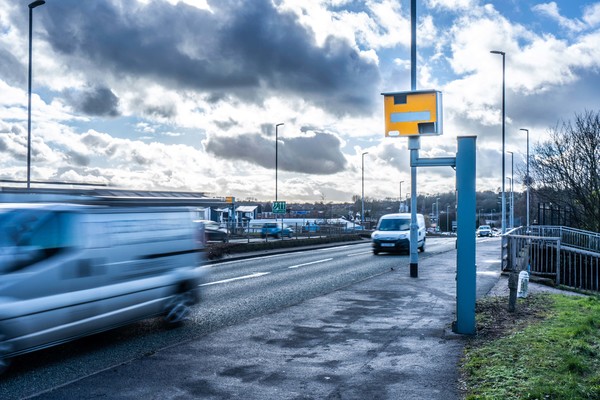Max Verstappen took a superb victory in an action-packed Emilia Romagna Grand Prix at Imola Italy. Rain ahead of the formation lap caused drama with Fernando Alonso hitting a tyrewall on his way to the grid, but he made the start. Most of the field started on intermediate tyres on a track that was damp at one side and soaking wet at the other.
Leclerc spun at Acque Minerali on the warm-up lap but managed to keep his place in the formation. Launching off an almost dry startline, Verstappen in third, starting in second gear drove up alongside pole sitter Hamilton on the run to Tamburello where Hamilton bounced across the kerbs, allowing Verstappen to take the lead.
Latifi spun at Acque Minerali regaining the track only to crash a few yards later after contact with Mazepin, that brought out the safety car. Mick Schumacher crashed while weaving to warm his tyres and Perez went off at Piratella doing the same. Perez lost, then took back two places, but later received a 10-second stop/go penalty for overtaking behind the safety car.
Norris, who lost places after an incident, surged up the order with some great overtaking moves. Sainz lost touch with the squabbling McLarens, who switched positions after Ricciardo was instructed to let Norris past. Ten laps later, Sainz passed Ricciardo for sixth. Vettel was the first to switch to dry weather tyres (slicks), but it didn’t work well.
Verstappen went for his slicks on Lap 28, Hamilton stayed out for another lap, but a slow stop meant he re-joined further behind Verstappen.
Hamilton went off at Tosa while trying to lap Russell, damaging his front wing against the tyrewall before reversing out of the gravel trap. A red flag was called after Bottas and Russell clashed on the high-speed run to Tamburello with both cars slamming into walls creating so much debris that the race had to be stopped, both drivers were unharmed.
Hamilton was now over a lap behind the leader, but due to the race being restarted behind the safety car he could unlap himself, his luck was certainly in, he was now only six seconds behind Verstappen, his car had been repaired and he was on new tyres. Verstappen half-spun at Rivazza at the restart but still led away from Leclerc, who was passed by Norris (now on soft tyres) and flying. Perez was fourth, ahead of Sainz and Ricciardo. Hamilton restarted ninth but gained two places when Tsuonda spun at Tamburello and Perez spun at Variante Villeneuve.
Hamilton passed Stroll, Ricciardo, Sainz, Leclerc and then Norris. But Verstappen was well out of reach scoring his first win in 2021. Hamilton finished a fortunate second, ahead of Norris third, Ferrari drivers Leclerc and Sainz were fourth and fifth with Ricciardo sixth, Stroll was seventh, Gasly eighth with Raikkonen and Ocon taking the final points scoring positions in ninth and tenth. Hamilton took fastest lap giving him a one-point lead in the championship standings.
When roads take their toll

WHEN driving in the south of the island toll roads are the norm, but could they soon be the norm on northern roads as well.
With electric cars costing the Treasury billions in fuel tax revenue, a ‘pay as you drive’ scheme is looking increasingly likely. Long before the coronavirus pandemic dealt a blow to finances, there was already a financial catastrophe looming over the horizon.
The accelerating trend for motorists to switch from petrol and diesel-powered cars to zero-emission cars is predicted to leave a black hole in our finances. The shortfall will be caused in part by a loss of fuel duty, currently roughly half the amount we pay at the pumps and generating around £28bn a year. The other issue would be the loss of road tax duty which currently raises around £6.5bn.
In Norway, a new motor insurance tax has replaced road tax costing EV owners around £180 per year instead of their previous rate of zero. While raising the cost of road tax could alleviate the strain on the coffers of going electric, it will be a lot trickier to replace the fuel duty that will be lost.
Fuel duty is unavoidable because it’s levied on every litre of petrol and diesel sold. Any replacement for fuel duty must have the flexibility to charge drivers of the most polluting vehicles an appropriate amount while, for the moment still being able to incentivise drivers to switch to zero-emissions vehicles. Crucially, any new system must be able to tax every vehicle fairly.
And so, how will these taxes be raised in the future? Road tax on all vehicles including EVs? An insurance levy on all vehicles including EVs? Or will we have to get used to toll roads on all the island’s roads? Watch this space.
The new five-door Citroen C1 Urban Ride is now revealed

Citroën has revealed details of its new C1 'Urban Ride' set to be launched in the UK at the end of May. The new car will sit alongside the current 'Shine' and 'Airscape' model variants joining the existing line-up but replacing the outgoing 'Sense' trim. The new five-door city car will no doubt be popular joining a range that has sold more than 175,000 units since its initial launch.
Citroen C1 1.0 72 PS Urban Ride [test drive] https://t.co/02ASFwfSvx pic.twitter.com/AELXu4H9d6
— caroto.gr (@carotogr) September 25, 2018
With its enhanced body styling, flared wheel arch extensions and dark-tinted windows, the Urban Ride has a distinctive style that will stand out on any city road. The new C1 also comes with a host of technological aids for driver safety and security, including Hill Start Assist, Emergency Braking Assistance and curtain airbags yet still maintains the practical agility of the rest of the range, with superb handling and a handy turning circle.
New C1 owners will have the option of personalising their car in a range of colours, including Scarlet Red, Ural White, Calvi Blue and Caldera Black, while an optional bi-tone Caldera Black roof adds to the options. Inside, the cabin is finished with a Grey fabric trim and a leather-trimmed steering wheel, and gear knob.
Like the current Sense model, the new Urban Ride is available only with a naturally aspirated 1.0-litre three-cylinder petrol engine, which develops 71bhp driving the front wheels via a five-speed manual gearbox. No automatic option is offered.
The unit has a leisurely 0–60mph time but, more importantly, it conforms to the latest Euro 6d emissions standard, with a claimed CO2 figure of 109g/km. Citroen is yet to confirm the official fuel economy figures but, like the older model, they expect a figure upwards of 55mpg.
Prices for the new C1 Urban Ride start from £12,815 OTR, and there’s a five-year/100,000-mile warranty on all new models ordered online.







